Perfect surgical outcomes can never be guaranteed. Regardless of a surgeon’s experience and expertise, results can be suboptimal and require additional intervention. An experienced plastic surgeon will explain the possibilities of undesirable outcomes preoperatively and be able to correct and or improve results with additional surgery. Primary surgical results are often more predictable than secondary results. Depending on the nature of the problem, a secondary fix can be more daunting than getting it right the first time. In these circumstances a surgeon’s experience is invaluable. Most plastic surgeons have performed primary breast augmentation but correcting a double bubble or other unacceptable outcomes requires a level of technical skill and judgment that only time and experience on-the-job can give.
An excellent example of an unacceptable outcome is patient #1. Many of the nuanced difficulties involved in breast augmentation are apparent in this case.
Patient 1 had her initial breast enhancement approximately 15 years ago with saline round submuscular implants placed at another facility. Eight years after breast augmentation her left breast implant spontaneously deflated. She requested replacement of her saline implants with a similar volume round smooth walled silicone gel implant. If deflation happens within 10 years of the initial augmentation surgery this can be performed and covered by the implant manufacturer’s warranty. Her breast tissue was 8 years older and obviously handled the weight of a new implant differently following minimal dissection. She subsequently underwent inframammary crease reconstruction with a suturing technique and replaced both implants with silicone gel textured prostheses. Her final result is sufficient.


Another case example is patient 2, follow this link to view her results.
Patient 2 had breast augmentation surgery with smooth walled silicone gel implants performed elsewhere. She was told that the result was due to a pre-existing asymmetry that was never explained before her surgery. Her unacceptable outcome was apparent and she was frustrated that her primary surgeon was going to charge more money to correct this problem. At her secondary surgery her implants and the surrounding capsule tissue was removed. This was necessary to allow a firm adhesion to help hold the gummy bear implant in its proposed new elevated location. The left breast required an inframammary crease reattachment but the right breast was improved by changing the implant to a 450 cc gummy bear implant. The fullness in the upper pole is the result that can be achieved with a fixed form (gummy bear) implant.




Patient 3 demonstrates a common unacceptable result.
Patient 3 had saline implants removed without a capsulectomy performed 10 years prior. She simultaneously received an inverted T mastopexy. She stated that her result was acceptable immediately after surgery but noticed that her breasts seem to slide inferiorly resulting in this apparent sagginess. Patient 3 underwent bilateral capsulectomy of the now 10 year old periprosthetic capsule tissue along with breast tissue removal with liposuction and excision. A small textured cohesive gel low-profile implant was placed in the new submuscular pocket to give a more youthful, firm feeling breast.
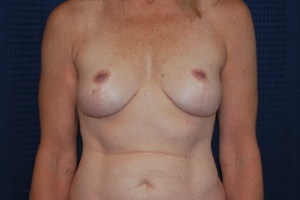
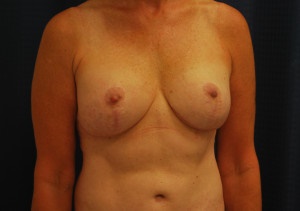
This is a 32 year old mother who was unhappy with a silicone smooth walled breast augmentation and lift performed over 10 years ago. Her pocket was revised and her implants were replaced with gummy bear implants. A breast reduction was also performed removing 200 grams to give the breasts a more youthful appearance.
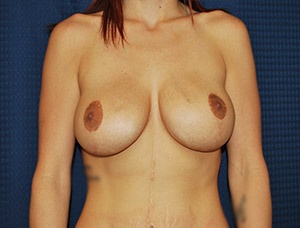
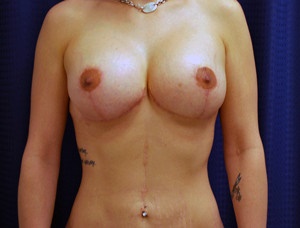
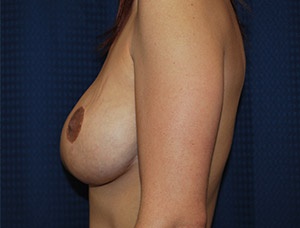
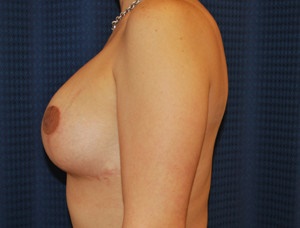
"These cases represent common secondary problems experienced with cosmetic plastic surgery. Obviously they are not frequent but after 20+ years in practice, Dr. Barnett has treated a wide array of unacceptable results. Our policy at Alpine Plastic Surgery is that unacceptable outcomes following our primary intervention will be corrected. Preoperative irregularities are discussed before surgery in an attempt to define realistic outcomes. We understand that a single happy patient may refer 3 or 4 friends. An unhappy patient may deter many more."